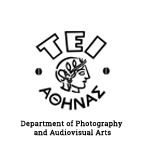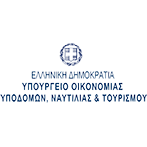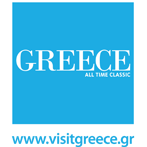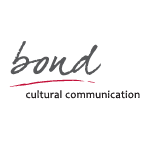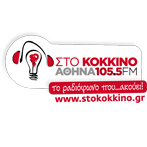
11th Athens Digital Arts Festival – Public Space_s


*/ 11th ADAF | 21 – 24 May 2015
8.000 visitors
Diplareios School, 3 Theatre Square, 10552, Athens / Theatre Square / Monastiraki Square / St. Eirini Square -Historic Centre of Athens
*/ Partcipation: 2.000 artists’ submissions / 150 artists / 40 countries
*/
Athens Digital Arts Festival (ADAF) has successfully completed its 11th edition in the early hours on Monday, May 25. Under the theme of Public Space_s, the Festival expanded in various public spots in the city and highlighted the notion of public space, one of the most controversial concepts of our days. By triggering our experience and relationship to public spaces, the festival explored the critical language and aesthetics of the digital medium.
In the course of 4 days, from May 21 to May 24, the festival hosted the works of 150 artists from Greece and abroad in Diplareios School, Monastiraki square and St. Eirini square. The presented artists shared their own narratives with the audience, redefining the notion of public space both in the digital environment and urban space.
The 11th Athens Digital Arts Festival, through the unique language of new technologies, sound, space, information networks, and communication technologies, created a dynamic public space highlighting several aspects of digital creativity.
In our times, the notion of public space appears to be one of the most contradictory concepts. With the rise of network and communication technologies, our experience of public space has changed. Public space is not only characterized by physical space and architecture but also by networks and knowledge distribution.
While public space is mainly being interpreted through urban planning, digital public space is organized through IP locations, URLs and protocols. Their cartographies, as distinct as they may seem, are both informed by network dynamics that add new layers of interpretation. Squares, parks, streets and the Internet are all potential public spaces that are activated through participation and engagement in order to acquire meaning.
The multiple interconnected spaces within which we act have redefined and affected our perception of everyday life as well as our social and cultural imaginaries. On the other hand, real-time data circulation and information exchange have created new patterns of communication allowing communities to surpass their localities and explore new modes of engagement and collaboration.
However, inhabiting at the same time a plethora of spaces that are potentially public the question that arises is: how open and free are these spaces? Have the visions regarding open access to public space and eventually public data been fulfilled?
Highlights

Martin Bricelj Baraga | SI DarkStar
Sound Installation

Miss Data & Israeli Pirates | IL The Internets
Video Installation

Sander Veenhof & Rosa Frabsnap | NL Cyborg Dating
Installation

James Bridle | UK Occupy the Cloud
Installation

Nina Bouchard & Nikolaos Chandolias | CA & GR Poli[s]ound
Project

Ivar Veermäe | EE Center of Doubt
Project

Luc Messinezis | GR Eavesdropping; Crisis
Sound Art Installation

!Mediengruppe Bitnik | CH Delivery for Mr. Assange
Video Installation
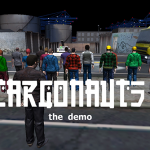
Theodoros Giannakis, Anna Lascari, Ilias Marmaras, Brett Neilson, Ned Rossiter, Yannis Scoulidas | GR & AU Cargonauts the Demo
Video Installation

Fanny Hagmeier | DE Formation
Video Installation

Ziazopoulou Alexandra, Kokona Erato | GR Κονσέρβαtive
Installation

Kyriaki Goni | GR Deletion process, Only you can see my history
Installation

Yiannis Kranidiotis | GR Light Catcher
Sound and Light Installation

Julian Oliver | NZ No Network
Installation

Aurèle Ferrier | CH Infrastructures
Film

Maria Varela | GR Accept
Installation

Karl Heinz Jeron | DE Hermes Opera
Performance

Martin Reiche | DE Drone Garden
Non-interactive Installation

Radiance | AU The Space Between Us
Installation

NOTA BENE Visual | TR In Order to Control
Visual Typographic Installation

Stelios Karatheodorou | GR Public Spaces
Photographic Installation

Brüno Melo | BR Dancing City
Gif Installation

Demetris Shammas | CY Things inside other things
Algorithm Installation

Alexia Tsagari | VICE Generation Sq.
Sound Installation

Athens Digital Arts Festival | Video Art
Video Art Installation

Athens Digital Arts Festival | Animation
Animation

Thomas Munz | PUBLIC SPACE~S LTD
Video Installation

Yoana Buzova | LEAVE A MESSAGE
Workshop

Athens Subsumption | Metaxication Inc.
Workshop

Babis Alexiadis | FROM ANALOG TO DIGITAL ANIMATION
Animation Workshop

Coralie Courguechon | Do you really want to go to the Acropolis?
Workshop

Martin Reiche | Offensive Computing
Workshop
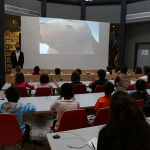
Ilias Chatzichristodoulou | GR Animating the Image
Animation Workshop

Katerina Galani, Sotitris Iliadis, Vanias Staurakakis | GR DIY Electro Dough – Introduction to Electronic Circuits & Other Magic
Workshop

Danja Vasiliev | Superglue
Workshop

Sarah Grant | Subnodes
Workshop

Israeli Pirates des | Occupy WiFi Workshop
Project

Djeff | FR Super Google Clouds
Installation/ Website

_hÿperlocal @ ADAF | NL BrowserBased Group
Installation

Chiara Passa - IT | Extemporary land art on Google Earth
Artwork Installation

Marc Lee - CH | Pic-me – fly to the locations where users send posts
Installation

Gavin Baily and Tom Corby - UK | Terra Incognita
Installation

Benjamin Grosser - USA | ScareMail
Installation

Florian Kuhlmann - DE | localnonsculpture.net
Site-specific Installation

James Bridle - UK | Rorschcam NYC
Installation
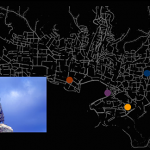
Ismini Gatou - GR | 5:6 landscapes of mytilene
Sound Installation

Joana Moll - ES | CO2GLE
Net-based Installation

Jonas Lund - SE | We See In Every Direction
Installation

Niko Princen - NL | Vlinder
Application

Nicolas Bernier - CA | frequencies (synthetic variations)
Audiovisual Installation

Alex Augier - FR | oqpo_oooo
Audiovisual Performance

Jannis Anastasakis – Deniz Angelaki - GR | Elektronik Meditation
Audiovisual Project

Michela Pelusio & Stratos Bichakis - IT & GR | Space Time Helix
Sound and light Installation

Gil Delindro - PT | Voidness of touch
Performance

Alexandros Drymonitis & Alessandra Leone a.k.a. aikia - GR & IT | Self-absorption
Performance

Incredible Bob & WoO - RS | Peoplemeter
Performance

Yro - FR | Triangles Irascibles
Video Installation

Music Concert | Σtella
Musician

Music Concert (powered by Jumping Fish – Cosmote) - GR | Idra Kayne
Musician

Music Concert | Tolis Fasois
Musician

DJ SET - En Lefko 87.7 | Panagiotis Menegos
Producer -DJ
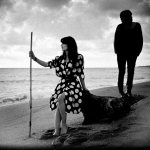
Music Concert (powered by Jumping Fish – Cosmote) - GR | Echo Train
Band

Music Concert (powered by Jumping Fish – Cosmote) - GR | Ex-Girlfriend’s Perfume
Band

VIDEOHOLICA
Video Art Installation

VIDEONALE
Festival

MADATAC
Video Installations

IMPAKT
Video Installations









